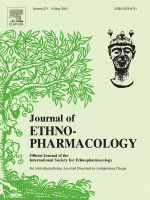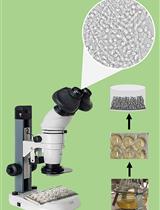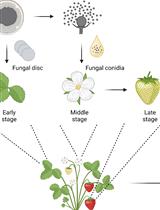- EN - English
- CN - 中文
Candida Biofilm Formation Assay on Essential Oil Coated Silicone Rubber
精油包覆硅橡胶上念珠菌生物膜形成的实验研究
发布: 2021年03月05日第11卷第5期 DOI: 10.21769/BioProtoc.3941 浏览次数: 3555
评审: Alba BlesaDevanshi D KhokhaniTimo A Lehti
Abstract
Development of biofilm associated candidemia for patients with implanted biomaterials causes an urgency to develop antimicrobial and biofilm inhibitive coatings in the management of recalcitrant Candida infections. Recently, there is an increase in the number of patients with biofilm formation and resistance to antifungal therapy. Therefore, there is a growing interest to use essential oils as coating agents in order to prevent biomaterial-associated Candida infections. Often high costs, complicated and laborious technologies are used for both applying the coating and determination of the antibiofilm effects hampering a rapid screening of essential oils. In order to determine biofilm formation of Candida on essential oil coated surfaces easier, cheaper and faster, we developed an essential oil (lemongrass oil) coated surface (silicone-rubber) by using a hypromellose ointment/essential oil mixture. Furthermore, we modified the “crystal violet binding assay” to quantify the biofilm mass of Candida biofilm formed on the lemongrass oil coated silicone rubber surface. The essential oil coating and the biomass determination of biofilms on silicone rubber can be easily applied with simple and accessible equipment, and will therefore provide rapid information about whether or not a particular essential oil is antiseptic, also when it is used as a coating agent.
Keywords: Biofilm formation (生物膜形成)Background
In recent years, the frequency of Candida infections caused by both nosocomial and opportunistic Candida strains has increased rapidly especially due to the growing number of transplant recipients, cancer patients and patients who receive immunosuppressive therapy (Sanguinetti et al., 2015). Apart from this, development of candidemia in patients with implanted biomaterials such as catheters (Simitsopoulou et al., 2014), dental implants (Li et al., 2012), voice prostheses (Talpaert et al., 2015) and prosthetic devices (Ramage et al., 2006) causes an urgency to develop preventive strategies such as antimicrobial coatings in the management of recalcitrant Candida infections (Ramage et al., 2006). Since biofilm formation plays a pivotal role in the development of recalcitrant candidemia (Simitsopoulou et al., 2014), not only antimicrobial therapies, but also antibiofilm strategies are needed for the prevention of biomaterial-associated Candida infections. Recently, a growing increase in the incidence of candidemia has been associated with the increase in biofilm formation and resistance to antifungal therapy (Francisconi et al., 2020). Substances obtained from traditional medicinal plants, such as volatile essential oils have been regarded as attractive sources for new antimicrobials(Francisconi et al., 2020). Essential oils, originating from different parts of a variety of aromatic plants not only have antimicrobial but also have antibiofilm effects against various microorganisms (Akthar et al., 2014; Kim et al., 2016; Sahal et al., 2019 and 2020). Therefore, the antibiofilm effects of several essential oils against different Candida species have been studied for years (Almeida et al., 2016; Kryvtsova et al., 2019). Recently, essential oils have also been evaluated as agents that prevent biomaterial-associated Candida infections. In particular, there is a growing interest in the use of a lemongrass essential oil as a coating agent (Sahal et al., 2019 and 2020). Often high costs and complicated technologies are used for both applying the coating and determination of the antibiofilm effects. For example, Liakos et al. (2017) used electrospinning to apply a cellulose acetate based coating containing the essential oil and Anghel et al. (2012) used Confocal Laser Scanning Microscopy images to asses fungal biofilm architecture on Fe3O4/C18/essential oil coated ProvoxTM voice prostheses. These techniques are often very expensive, laborious and require highly qualified equipment and personnel. Thus, they constrain an ease and rapid screening of essential oils. Therefore, we aimed to develop cheap, effective and easily applicable protocols to rapidly screen the anti-candida biofilm effects of various essential oils coated on silicone rubber.
In the first part, we describe the preparation of essential oil coated silicone rubber surface using a hypromellose ointment/essential oil mixture. In this part, hypromellose ointment was used as a vehicle because it mixes well with essential oils and because of its good adhesive properties to wetted surfaces. In the second part, we describe the determination of the biofilm mass of Candida biofilm on these surfaces using a modified crystal violet binding assay. Both protocols can be applied easily and rapidly with simple and accessible equipment.
Materials and Reagents
VST Silicone elastomer (low viscosity, translucent silicone) (10 × 10 × 1.5 mm sheets) (Polymerization conditions: 5-bar pressure, 45 °C, 90 min.) (Maxillofacial Silicone System, Technovent Ltd., South Wales, UK, catalog number: VST-50HD Shore A 38, cure time overnight).
Petri dish (90 mm × 17 mm) (Isolab, catalog number: 0 8102061 )
Erlenmayer Flask (250 ml) (Isolab, catalog number: 027.01.250 )
6-Well plates (Biofil, catalog number: TCP 011006 )
24-Well plates (Biofil, catalog number: TCP 011024 )
Centrifugal tube 50 ml (Orange Scientific, catalog number: 4440100N )
Candida strains (Clinical Candida isolates, previously characterized as highly biofilm forming and identified using the 18S Ribosomal RNA Gene Sequence Analysis; or biofilm-positive ATCC Candida strains such as Candida albicans (Robin) Berkhout (ATCC®, catalog number: MYA-274 MYA-274TM )
Lemongrass essential oil (Merck, catalog number: 0 5521501 )
Hypromellose ointment [Hypromellose 4000 mPa.s 20% (w/w); Soft paraffin white 80% (w/w)], [FNA (Formularium der Nederlandse Apothekers), Dutch Pharmacists' Formulary, 2013], (Fagron, catalog number: 102064 )
Crystal Violet Powder (Merck, catalog number: C0775-100G )
Brain Heart Infusion (BHI) Powder (Merck, catalog number: M110493.0500 )
Agar-agar (Merck, catalog number: M101613.0500 )
Ethanol 96% (v/v) (Isolab, catalog number: 9200262500 )
Extran MA 02 (Merck, catalog number: 107553 )
K2HPO4 (Merck, catalog number: 7758-11-4)
KH2PO4 (Merck, catalog number: 7778-77-0 )
Distilled Water
Brain Heart Infusion Broth (see Recipes)
Brain Heart Infusion Agar (see Recipes)
1% Crystal Violet Solution (see Recipes)
10 mM Potassium phosphate buffer (see Recipes)
Equipment
Bunsen burner
Porcelain mortar [Outside diameter 10.5 cm, inner diameter 9.0 cm, inner depth 4.5 cm. Content 100 ml. Glazed to grinding surface, grinding surface unglazed and porcelain pestle (Length 11 cm, unglazed on grinding surface, further glazed)] (Haldenwanger, Berlin)
Forceps
Spectrophotometer (UV-Visible Spectrophotometer; Shimadzu, model: UV-1700, catalog number: 206-98366A )
Centrifuge (Eppendorf, model: 5810R, with an Eppendorf Swing-bucket rotor A-4-62 , catalog number: 5810000327)
pH Meter (ConsortTM C3010 Benchtop Multiparameter Analyzer) (Fisher Scientific, catalog number: 11772009 )
Thoma Counting Chamber (Neubauer, catalog number: C964110 )
Autoclave (Priorclave, Catalog number: 12758935 )
Light Microscope (LEICA, model: DM500 )
Incubator (Static) (Dedeoglu, catalog number: MMF-KM-068 )
Software
MINITAB (Version 18)
ImageJ (Version 1.49)
Procedure
文章信息
版权信息
© 2021 The Authors; exclusive licensee Bio-protocol LLC.
如何引用
Sahal, G., Woerdenbag, H. J., Hinrichs, W., Visser, A., van der Mei, H. C. and Bilkay, I. S. (2021). Candida Biofilm Formation Assay on Essential Oil Coated Silicone Rubber. Bio-protocol 11(5): e3941. DOI: 10.21769/BioProtoc.3941.
分类
微生物学 > 微生物生物膜 > 对抗菌剂的反应
生物科学 > 生物技术 > 微生物技术
您对这篇实验方法有问题吗?
在此处发布您的问题,我们将邀请本文作者来回答。同时,我们会将您的问题发布到Bio-protocol Exchange,以便寻求社区成员的帮助。
Share
Bluesky
X
Copy link













